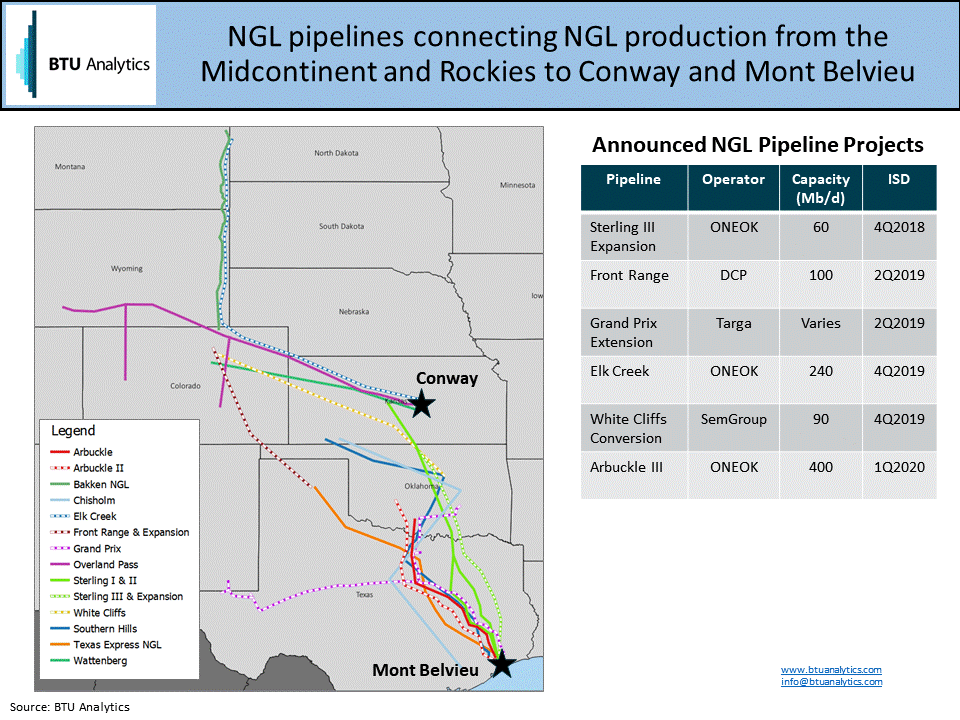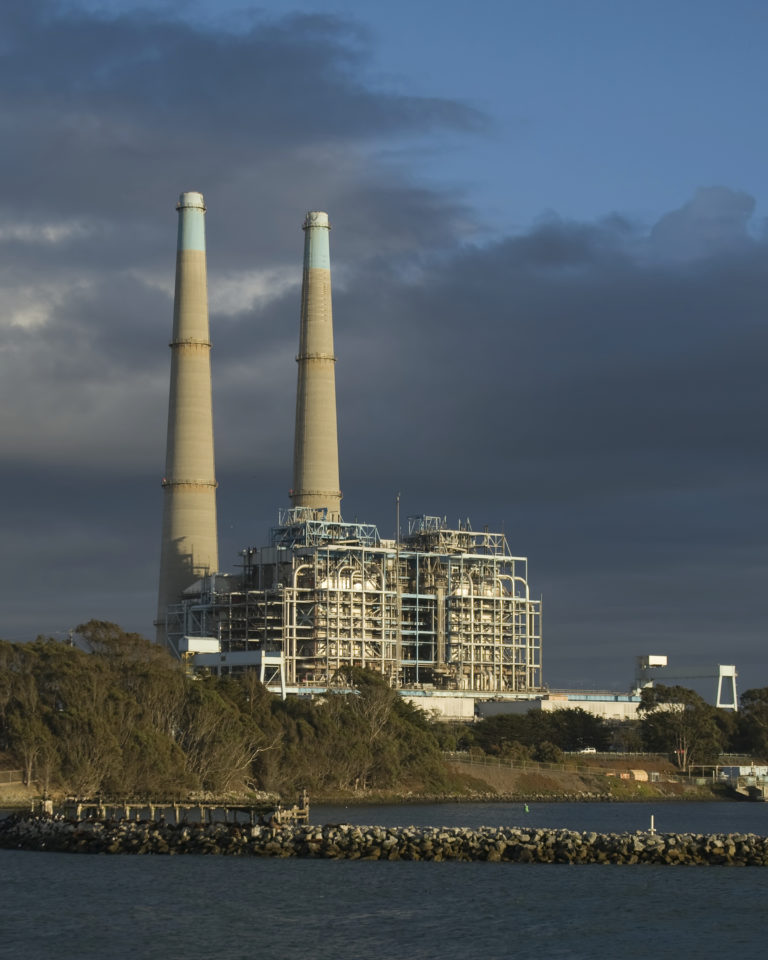As natural gas liquids (NGL) production increases in the Midcontinent and Rockies, infrastructure constraints are popping up and widening the NGL price differential between Mont Belvieu and Conway. New pipeline capacity between the hubs, as well as new fractionation capacity at Mont Belvieu, is on the horizon to help relieve these constraints. However, what does this mean for Conway pricing in the near term?
On the supply side, key producing regions feeding the Conway hub include Oklahoma, the Rockies including the DJ and PRB, and the Williston. Recovered NGL production in these regions has increased by about 130 Mb/d or 15% from the average in 2017 to the average in the first half of 2018. This is due to both increased gross gas production, as well as increased ethane recovery, as illustrated by ethane making up an increasing fraction of the recovered NGL barrel in these regions, shown in the figure below.

As NGL production continues to increase, the spread between Conway and Mont Belvieu NGL pricing has blown out over the past few months. On a volume weighted basis, the spread has widened to over 20 cents/gallon, up from about 3-5 cents/gallon as illustrated in the figure below. This widening NGL price differential indicates a constraint has developed in the NGL market; generally, NGL production moves from Conway in the Midcontinent to Mont Belvieu in the Gulf Coast, indicating a potential pipeline constraint moving barrels south.

On the infrastructure side of the equation, several pipeline projects have been announced to bring growing supply from these regions to market. ONEOK has announced new pipeline capacity connecting Conway to Mont Belvieu: first, a 60 Mb/d expansion of the Sterling III pipeline is due at the end of the year; and second, ONEOK has announced plans to construct Arbuckle II, adding an incremental 400 Mb/d of pipeline capacity by 1Q2020. However, these projects are in conjunction with other pipeline projects that will provide incremental supply to Conway: ONEOK’s 240 Mb/d Elk Creek pipeline from the Williston due in 2Q2019, and SemGroup’s 90 Mb/d conversion of the White Cliffs oil pipeline to NGL service by 4Q2019. Additionally, Targa is building an extension of its Grand Prix pipeline from North Texas into Oklahoma that could provide from 100-400 Mb/d of takeaway capacity for Oklahoma and North Texas producers. Targa’s line is expected to be online in 2Q2019. The Front Range pipeline from the DJ is also expanding, though this bypasses Conway.

In the meantime, before additional infrastructure is operational, pricing at Conway is likely to remain relatively weak. In particular, ethane at Conway will likely be related to regional natural gas prices to encourage ethane rejection. For example, in the Rockies, the price of natural gas at CIG versus the price of ethane in E/P mix at Conway and Mont Belvieu is shown below on an equivalent heating value basis. The price of ethane in E/P mix at Conway has followed the price of natural gas at CIG, even falling below it in May. This results in a negative ethane frac spread, without accounting for any transportation costs, meaning it is much more economic to reject ethane than recover it as a liquid if receiving Conway pricing.

This can be compared to stronger ethane pricing at Mont Belvieu, which has seen upward pressure as incremental petrochemical facilities become operational in the Gulf Coast. Since there are outlets from the Rockies to Mont Belvieu without going through Conway (e.g., via the Front Range Pipeline), these routes are likely becoming more attractive despite higher transportation costs to reach Mont Bevlieu versus Conway.
We anticipate increased gross gas production in the Midcontinent and Rockies due to strong oil prices, meaning downward pressure will likely continue at Conway until infrastructure is built out. To stay up to date on NGL production trends, check out our Upstream Outlook, where we provide production outlooks for 80 different sub-locations across the US.









